In modern city life, people tend to have busy lives and stressful jobs, and their bodies and minds get tired easily. Having a highly ornamental aquarium at home will more or less make you release some stress and feel relaxed and happy.
Content Table
Aquascape seems to be a simple combination of different plants, driftwood, and stones, but in fact, a good-looking aquarium is not so easy to build, aquascape is a real art, through the natural elements of the aquascape, color, lighting, materials, and other elements of the design, to create a landscape that can have a certain impact on human emotional performance or psychological needs. It not only decorates the indoor space environment but also forms a unique space atmosphere, allowing people to feel the spiritual enjoyment of entering the room and forgetting about their bodies.
So in this article, you, as an aquascape enthusiast, may learn more about how to choose good plants and rocks for your aquarium, which will become an extremely important milestone on your path as an aquarist.

The Significance of Aquascaping
For anyone new to aquascaping, it is important to understand how to care for aquatic plants. Many plants need time to grow and adapt to the changes made to the environment. For those who are unsure, some helpful videos on YouTube will help you. Alternatively, you can contact the author for more information. The significance of aquascaping cannot be overstated. It takes time to make the most of your newfound love of aquariums.
There are several types of aquascape plants. Some of the most common are Anubis, bucephalandra, microsorum, and mosses. These plants can be grown in an aquarium without soil or require little fertilizer supplementation. However, it is important to balance the planting with other plants. Large plants should be placed in a balanced arrangement so that they don’t draw attention away from the rest of the aquascape.
Depending on the type of plants you have, you may need to supplement the carbon dioxide in your aquarium to support the growth of your plants. If you’re growing high-tech plants, then you may need to use powerful light sources to ensure your health. To avoid algae outgrowing the plants, you may also need to add some carbon dioxide to your aquarium. The amount of carbon dioxide needed depends on the type of plants you want to grow and the number of fish you intend to keep.
The significance of aquascaping begins with the golden ratio. The golden ratio starts with the placement of plants and is a good starting point for any aquascape. You can create a focal point by choosing a contrasting red plant or an excellent rock. If you don’t have a focal point in a water garden, choose a plant that does not compete with it.
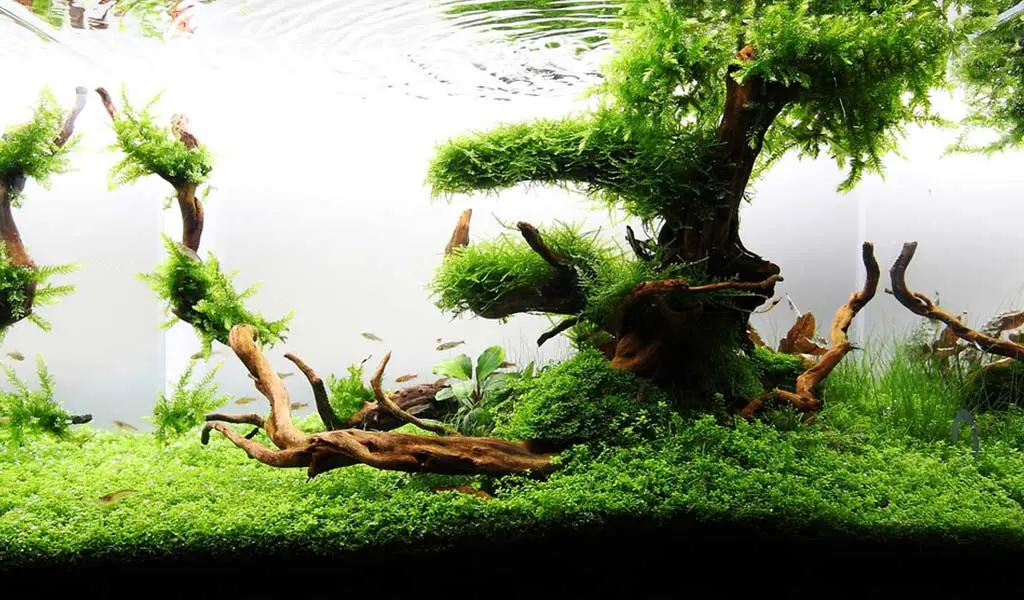
Inspiration For Aquascapes
In the 1980s, plant-oriented aquariums were planted in the Dutch style. This style was inspired by the idea of a botanical flower garden underwater. These plants are arranged in clear groupings and are constantly pruned and replanted. Today, natural aquascaping aquariums mimic natural landscapes. This type of aquatic landscaping is an artistic endeavor, combining a variety of aquatic plants with other natural elements.
Even though it is not a new concept to aquatic gardening, the principles of aquascaping still hold. Using natural forms of plants as inspiration is essential to achieving a natural-looking aquarium. The purpose of aquascaping is to provide a home for aquatic life and provide a habitat for endangered species. The importance of aquascaping is not just aesthetic; it has profound social and ecological benefits.
You can find many sources of inspiration for aquascapes. From landscapes and natural phenomena to architecture, nature can give your aquascape the finishing touches. Take a walk in the park or a nearby forest, and you’re bound to find some inspiration for your aquatic design. Take note of patterns and colors that catch your eye, and incorporate these ideas into your aquascape design. If you don’t know where to start, consider some of the popular aquascape design styles.
If you’re looking for a simple yet attractive way to add color to your aquascape, try incorporating underwater flowering plants. Bucephalandra and Anubias are two popular aquatic plants, both of which have white, spear-shaped blossoms. They also produce new blossoms when old blossoms are removed. They are ideal for aquascaping projects, and you can encourage more flowering by putting them in shallower tanks.
Those interested in larger-scale aquascape designs can find inspiration in the work of world-renowned aquascapers like Takashi Amano. The British aquascape is known for sharing his tips and techniques, and his aquascape, Sunrise in the Valley, was one of the top picks at the 2013 IAPLC show. You can learn more about his techniques and get inspiration from his beautiful work by checking out his Instagram page.
When choosing a style for your aquatic setting, you’ll need to invest in a high-quality tank and substrates. The glass of your aquarium should have low iron and minimum amounts of clear silicon work. This will allow you to see your aquascape easily. A great aquascape will inspire you and make your home a place to relax. So, take a moment to look around and get inspired. You can even do it without any professional assistance!
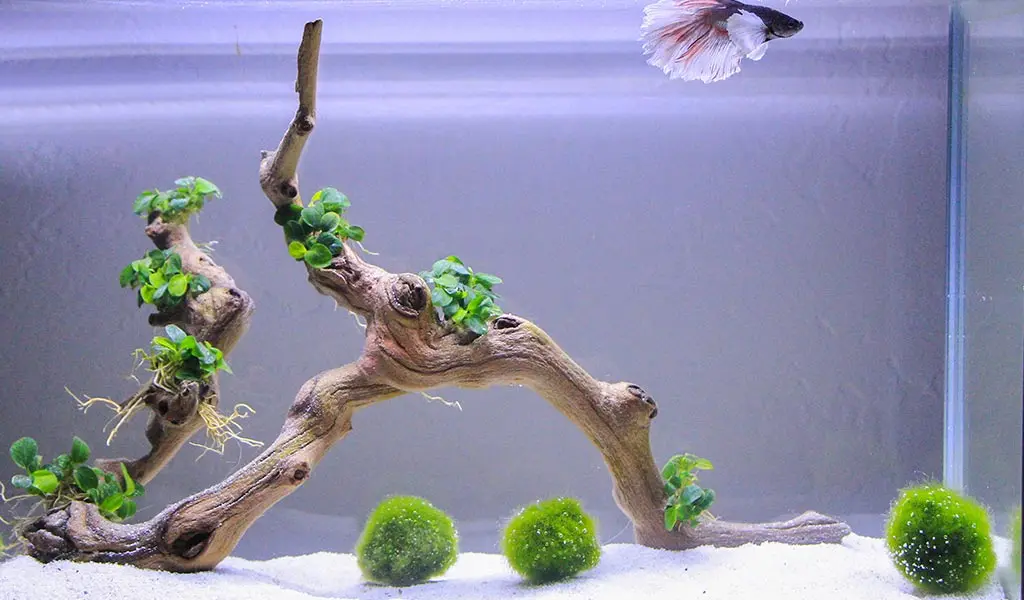
Aquascape Ideas
Natural aquariums also lend a dramatic impact to your aquascape design. The combination of a plant-heavy, gravel-covered substrate with small plants in the canopy mimics a natural environment. A low-lying grass-like plant conceals gravel beneath, giving the appearance of a meadow. To finish the image, you can add some rocks at the base of the tree. If you’re looking for something a bit different, consider an Asian-themed aquarium or one with a tropical flair.
There are many different types of aquascapes to choose from. You can combine your love of plants with your passion for fishkeeping. By combining both interests into a single hobby, aquascaping enthusiasts can create beautiful, unique, and beautiful aquatic environments. A combination of aquatic plants, rockscapes, and driftwood creates a unique look for each aquarium. Choosing the right plants to complement each other and incorporating them into the design is the key to making your aquarium an unforgettable space.
One way to achieve depth is to use the contrast between different sizes of the same thing. Use different colors to create layers. The final step in aquascaping is to select a focal point. A focal point is an object that guides the viewer through the entire underwater scene. A big driftwood piece, an unusual rock formation, or a beautiful plant arrangement are all examples of focal points. If you are not sure where to start, you can start with two layers and increase the number as you progress. Most award-winning aquascapes have four or five layers.
After you have established a basic layout, you should choose a few background plants. You can choose from Pogostemon helferi, Riccia fluitans, and Eleocharis vivipara. You can also choose from a selection of larger background plants, such as Vallisneria nana. Some larger background plants include Vallisneria nana and Rotala sp.
Another technique for an aquascape is Sanzon Iwagumi. This technique involves creating an intricate, three-pillared rock formation. The stone placement in this type of aquascape should be natural and harmonious. The rocks are arranged in a space that is spacious and fluent. The arrangement should be balanced with each other. This is a time-consuming process, so don’t be too impatient if you are not sure how the arrangement will turn out.
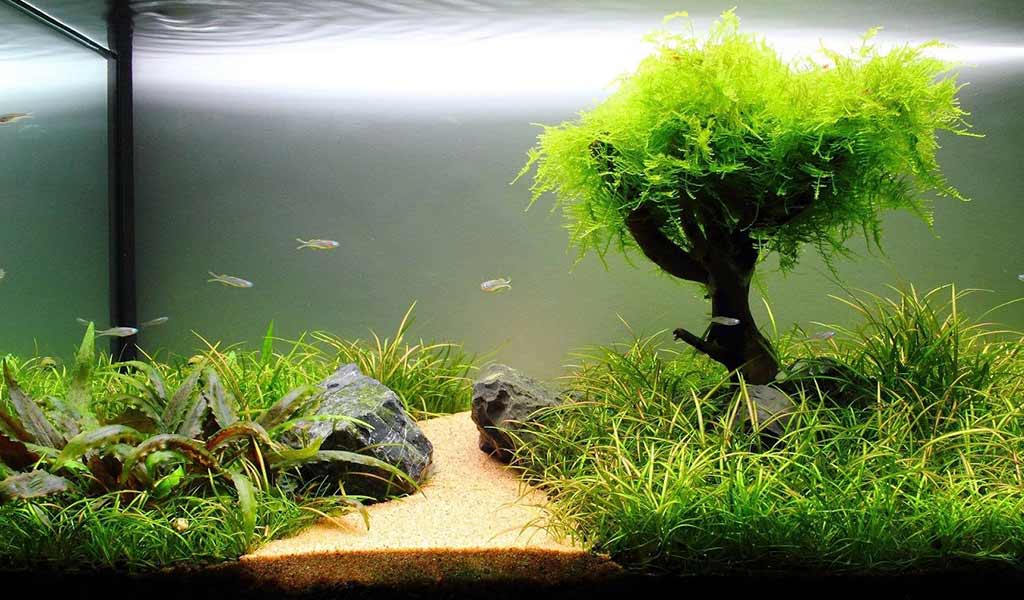
Aquascape Styles
Biotope
When you want to add a natural look to your aquarium, you can choose from one of the many different styles of aquascape designs. The first style is known as a biotope, which is a type of aquarium that attempts to mimic the environment of the fish. While the idea behind this style is to create an environment that mimics the environment in which the fish live, you can also choose a design that is more abstract, such as a moss garden or a tropical scene.
An aquascape that resembles a biome will often include elements of other styles, such as a waterfall or a moss garden. However, biome aquascapes are usually chaotic and may look overcrowded. To make the environment more natural, replicate rock choices and substrate to mimic the ecosystem of the fish. Dolomite and limestone are good examples of rock and substrate types that will help to buffer the water chemistry towards an alkaline state.
Iwagumi
Another popular style of aquascaping is called the ‘Iwagumi‘ style, after its creator Takashi Amano. This style of aquascaping is similar to terrestrial Zen sand gardens but emphasizes structure and size instead of driftwood. This style of aquascaping is a popular choice for those just getting started on a planted aquarium. It relies on epiphytes to enhance the natural beauty of flora and fauna.
If you want to create an aquarium that has a tropical theme, you should consider adding driftwood. Driftwood will give your tank a natural look, and some varieties of driftwood are even suitable for this style. Driftwood is a great addition to an aquascape, but be sure to check the kH and pH levels of your tank before you use it. However, be sure not to include live animals in your aquascape.
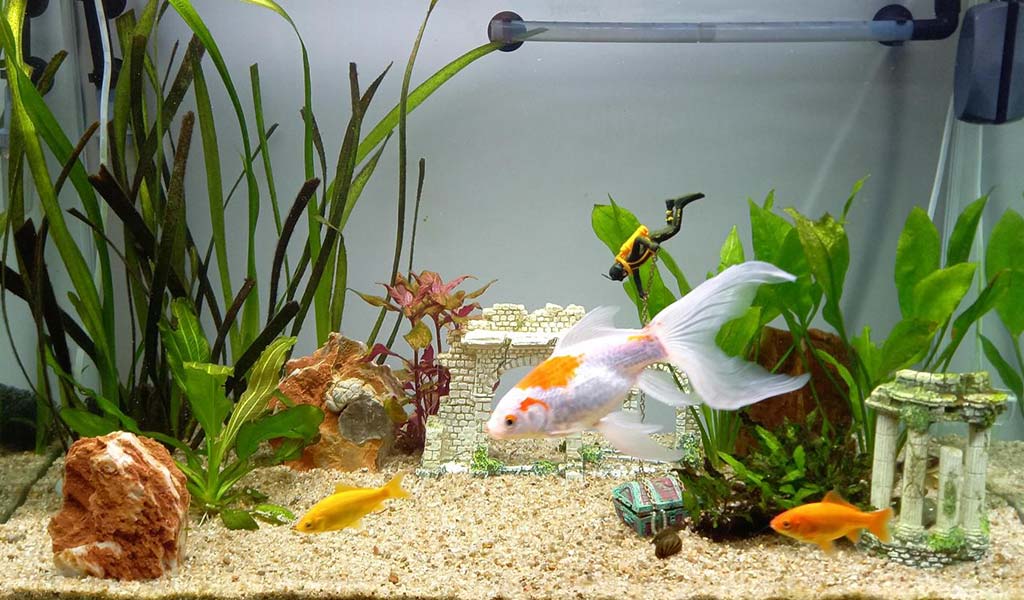
How to Maintain the Aquascape in the Later Stage
As your aquarium grows, you will probably have to spend more time maintaining it. However, this is not the end of your aquascape. The following tips will help you maintain your aquarium. Regular maintenance will prevent algae growth and poor plant growth. You should also try to keep the plants as healthy as possible, as they are your best defense against algae. To keep the plants healthy, make sure you provide them with adequate lighting, a good substrate system, and adequate circulation and filtration.
If you are planning to maintain an aquascape at a later stage, make sure you dedicate time each week to do so. Try to stick to this schedule, as it will help you keep the aquascape looking great for longer. If you wait until a problem appears, you are most likely to miss out on addressing it.
Another important step in maintaining your aquascape is doing big weekly water changes. Make sure you also keep an eye on your livestock and aquarium equipment.
Conclusion
In conclusion, a highly ornamental aquarium is not an easy thing to build, but through this article, you can know that a good-looking aquarium requires careful preparation of all aspects of the process, from the preparation of the aquascape materials to the maintenance of the aquarium afterward. Frankly speaking, if you can consider every detail before building an aquarium, basically you are not far from a perfect aquascape.

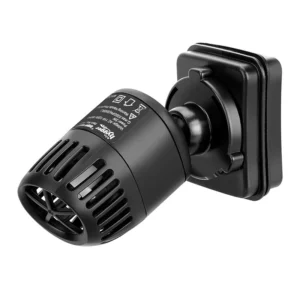
Leave a comment